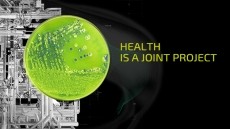New technology speeds up bird flu vaccine production
viral titer vectors, may facilitate the fast track development of
Adenovirus and AAV-based recombinant DNA vaccines for diseases such
as the Avian Flu.
The news meets the surging demand for widely available flu drug that is cheap to manufacture as worldwide governments prepare for a potential avian influenza pandemic.
Recombinant DNA (rDNA) vaccine technology could be the answer as it represents a powerful tool for an innovative vaccine design process known as "genetic immunisation."
GeneThera's system for analysing large-scale DNA sequencing, PURIVAX, is a multi-resin anion exchange chromatography system that improves biological purity and viral titer of recombinant Adenovirus and AAV vectors.
Recombinant Adenovirus (rAD) and AAV (rAAV) vectors are the ideal candidates for a gene delivery system. These viruses can efficiently deliver genetic material to both dividing and non-dividing cells, thereby overcoming some of the obstacles encountered with first generation retroviral vectors.
"GeneThera's PURIVAX is able to achieve both high purity and high viral titer based on its proprietary multi-resin anion exchange chromatography system, unlike traditional technologies and first generation chromatography processes that are inadequate, both in terms of purity and yield," said Tony Milici, CEO of GeneThera.
"PURIVAX technology can help achieve accelerated development of an rDNA vaccine for veterinary diseases, such as the Bird Flu."
According to the World Health Organisation, approximately 200 people have caught the disease and 113 have died worldwide since its onset in Asia in 2003.
Traditional technologies and first generation chromatography processes are not considered advanced enough for the manufacture of treatments of this nature, as purity and yield are not up to standards
Additionally, due to the limitation of these purification technologies, adequate viral titers cannot be achieved. The result is no efficient system to deliver immuonogenic genetic sequences into cells.
Equally important, rAd and rAAV are engineered virus genomes that contain no viral gene. One of the key features for rAd and rAAV is their ability to transduce a large variety of cells.
However, two technical challenges had to be overcome to fully utilise rAd and rAAV in the development of rDNA vaccines, namely the lack of a large-scale purification system and low viral titer.
This is the main selling point of >GeneThera's PURIVAX; rAD and rAAV system for rDNA vaccine development. It is able to achieve both high purity and high viral titer (up to 10e16 viral particles/eulate) based on its proprietary multi-resin anion exchange chromatography system.
Biological contaminants such as endogenous retrovirus, bacterial, mycoplasma, non-specific nucleic acids, lipids, proteins, carbohydrates and endotoxins are eliminated during the purification process.















